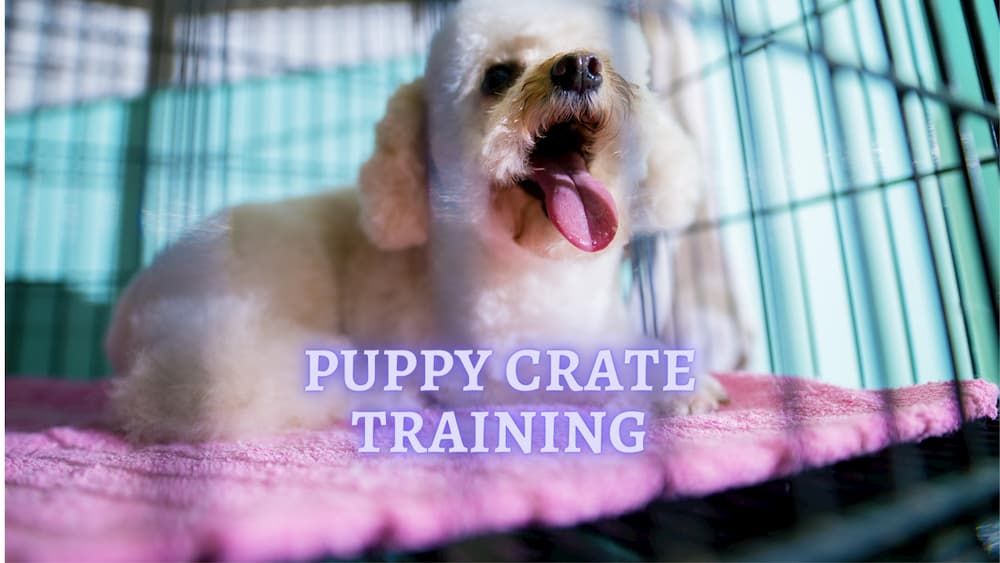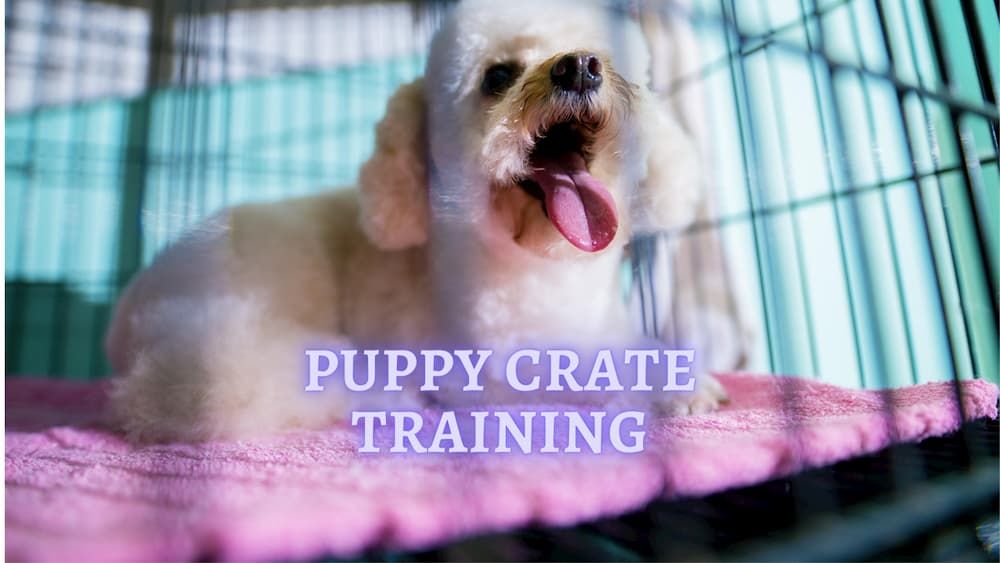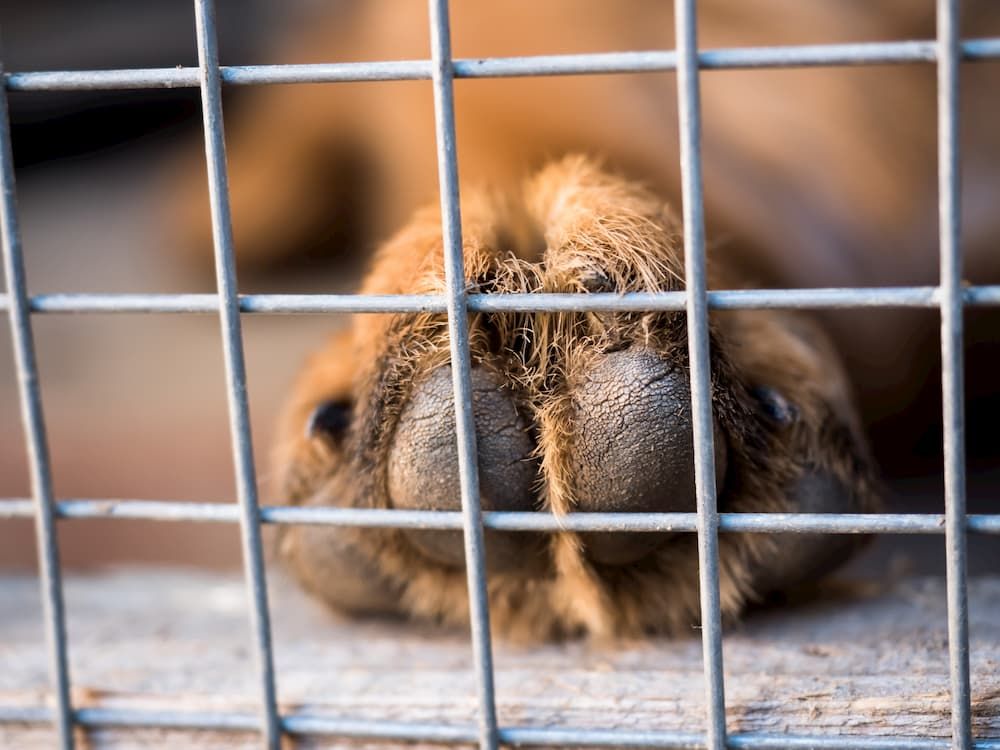
For dog owners who need to leave the house without fear of their puppy causing damage to property and themselves.


@dusanpetkovic / FreePik
Crate training or puppy crating is a common tool for new dog owners who are looking to promote positive behaviours and reduce damage/injuries. Unfortunately, it is impossible for you to spend every minute of every day with your new pup. The vast majority of people still have to get their seven hours of sleep, while also leaving the house to go to work. Therefore, the puppy must grow used to occupying their own time without damaging the house or causing injury to themselves. Confining them to their own small and private area, like a puppy cage, is the perfect way to do this. This is often only a temporary measure to instil acceptable behaviour before giving them more free reign over certain parts of the house.
Is it cruel to crate Train a Puppy?
The simple answer is no, crate training is not cruel as long as you conduct it in the correct way. For example, the crate/cage should never be used negatively for punishment. When confining your puppy to a small space when they are bad, you create unhealthy and cruel connotations. However, if you deck the crate with comfy cushions, toys, and more, the puppy will begin to see it as their own personal space, much like an adult dog bed. It is often a good idea to use the cage as a sleeping space at night and as a safe spot while you are out of the house. The last thing you want is for your puppy to have free reign of the house, causing damage to both property and themselves. Until they are fully trained, it is important to always have one eye on your puppy, something you cannot do while you’re sleeping or out and about.
How long can you leave 8-week old Puppy in a Crate?
It is important to remember that, like anything, you must first allow your puppy to become used to the crate. Locking them inside and expecting them to happily spend the night is naïve and does not take into account the feelings of the puppy. It may take them a while to acclimatise to the new space and even longer to enjoy it. Therefore, we have created a guide based on the age of your puppy and the duration they should spend in the crate. We should also note that this duration is based on consecutive minutes, not the total time per day or night. Often you will be able to give your puppy a quick break/run around before putting them safely back into the cage.
- 8-10 weeks: 30-60 minutes
- 11-14 weeks: 1-3 hours
- 15-16 weeks: 3-4 hours
- 17 weeks and over: 4-6 hours
How long does it take to Crate Train a Puppy?
The time iT takes to crate train a puppy can vary, although the time usually varies between days and weeks depending on the temperament and past experiences of the dog in question. The best way to crate train your puppy in record time is to follow this guide:
- Step 1 – Let them get it out of their system – Before starting any crate time, you should always let your puppy have the chance to relieve themselves outside and get in some good exercise.
- Step 2 – Place comfortable bedding and familiar toys within the cage
- Step 3 – Leave the crate door wide open for the puppy to explore on their own for the first time. You may have to tempt them in with some treats.
- Step 4 – Each time they enter the cage on their own, click with a clicker, or use a marker word to let them know that this is positive behavior. You should then praise them and give them a treat.
- Step 5 – Feed your puppy in the cage a few times to further the positive connotations.
- Step 6 – Once they are more familiar with the crate, you can close the door while they eat and re-open it once they are finished.
- Step 7 – Duration – Put your puppy in the crate for 15 seconds with their favorite toy and the door shut. Let them back out and give them a treat for ten seconds. Then repeat.
- Step 8 – Build up the time spent in the cage to 15 minutes at a time, never leaving their side as you do so. If they are struggling, increase the incentives and throw in easy durations of 30 seconds between the longer spells.
- Step 9 – Distance – Close the crate door and walk away, but only halfway across the room. Walk back, open the crate, and reward them with a treat. Keep doing this until you can walk completely out of sight.
- Step 10 – Walk out of sight and remain there for 15-30 seconds. Keep increasing this time alone in the cage until they are comfortable for 10-minute spells.
READ MORE: Raising a Puppy Tips


@elenglush / FreePik
What should I put in my Puppy’s Crate?
The most important thing is designing your puppy crate to be as comfortable and relaxing for the dog as possible. Including plentiful bedding is essential, as your dog will be enjoying plenty of sleep within the crate. You should also include their favourite toys and the items they have grown particularly close to; this should improve their ability to adapt to the crate. Remember, when dealing with young puppies, everything you put into the cage should be chew-proof, as these pups enjoy learning through their teeth.[1] Having waterproof or washable bedding is also another helpful touch, just in case the puppy has the odd accident within the crate. Some puppies enjoy it if you leave behind an item that smells of you, as it creates the impression that a part of you is still there with them. However, this depends largely on whether the puppy in question is likely to chew the item to pieces.
When it comes to food and water, the general advice is that you do not add either to the cage as they only create mess and spillages. It is better to plan your puppies feeding and hydrating either side of their crate times. However, if you do feel that you need to add food and water due to the length of their time in the crate, there are options open to you. Tip-proof bowls can be purchased to ensure that your puppy can’t knock it over and spill the food everywhere. Similarly, lickable water bottles can be used similarly to those found on the cages of rabbits and guinea pigs, ensuring that the puppy cannot knock over an entire water bowl. It can also be a handy tool to get your dog to associate their cage with positive memories if you feed them while they are in it.
READ MORE: Puppy Training Tips
It is also important to know what not to put into your puppy’s crate. For example, all collars and name tags should be removed before allowing the puppy to enter the crate. These can often become caught in the doors/wires/bars, creating a strangulation hazard. You should also ensure that your puppy crate is not located in the surrounding area of any electrical wires/cords. Puppies have been known to drag them towards the cage as a chew toy, which can have devastating repercussions. This same rule of thumb also extends to poisonous plants that may be located in close proximately to the cage. Move them out of reach. Finally, ensure that your puppy crate is not located within a direct source of heat/cold. Having the crate sitting in the sunlight, next to a radiator, or next to air conditioning can result in an unbalanced and uncomfortable temperature for your dog.
Article Sources:
- Woodnutt, Dr., and MRCVS Woodnutt. “How to Crate Train Your Dog | Veterinarian Advice.” The Idle Pup, 20 Nov. 2019, theidlepup.com/crate-training/






